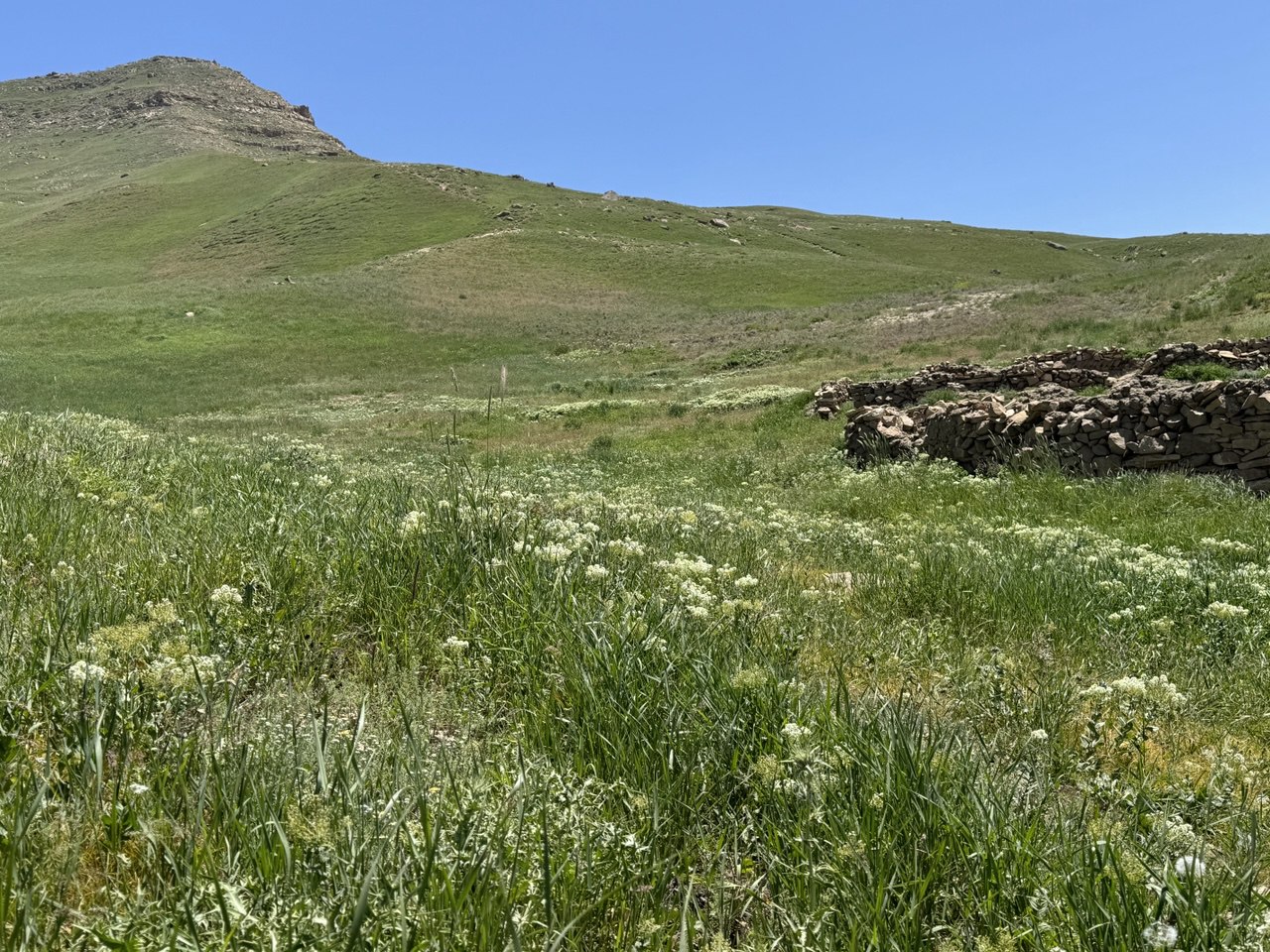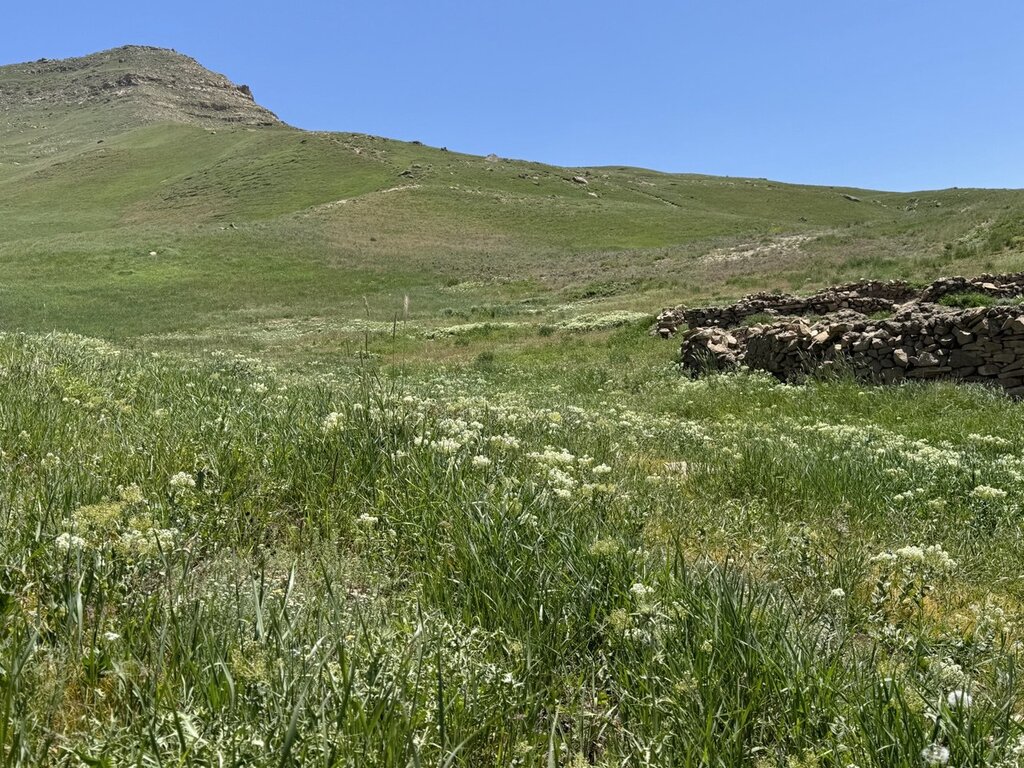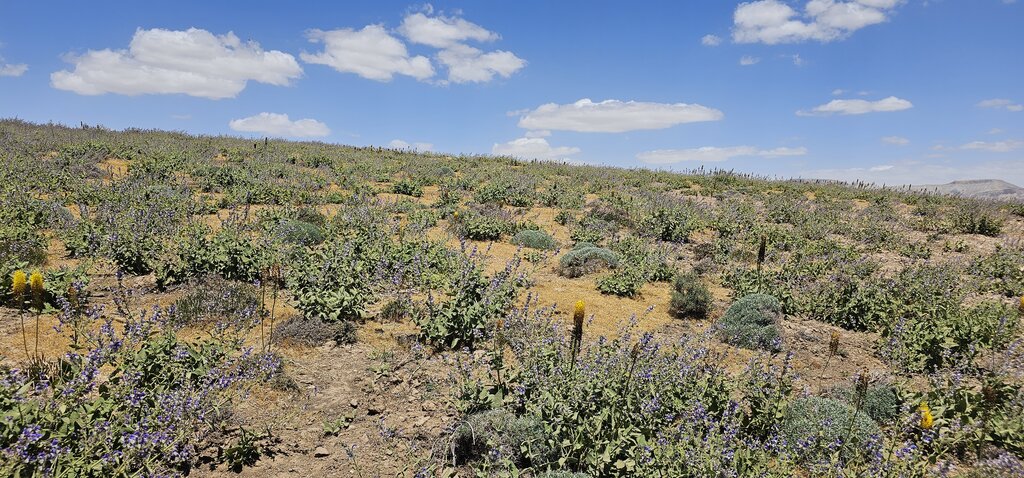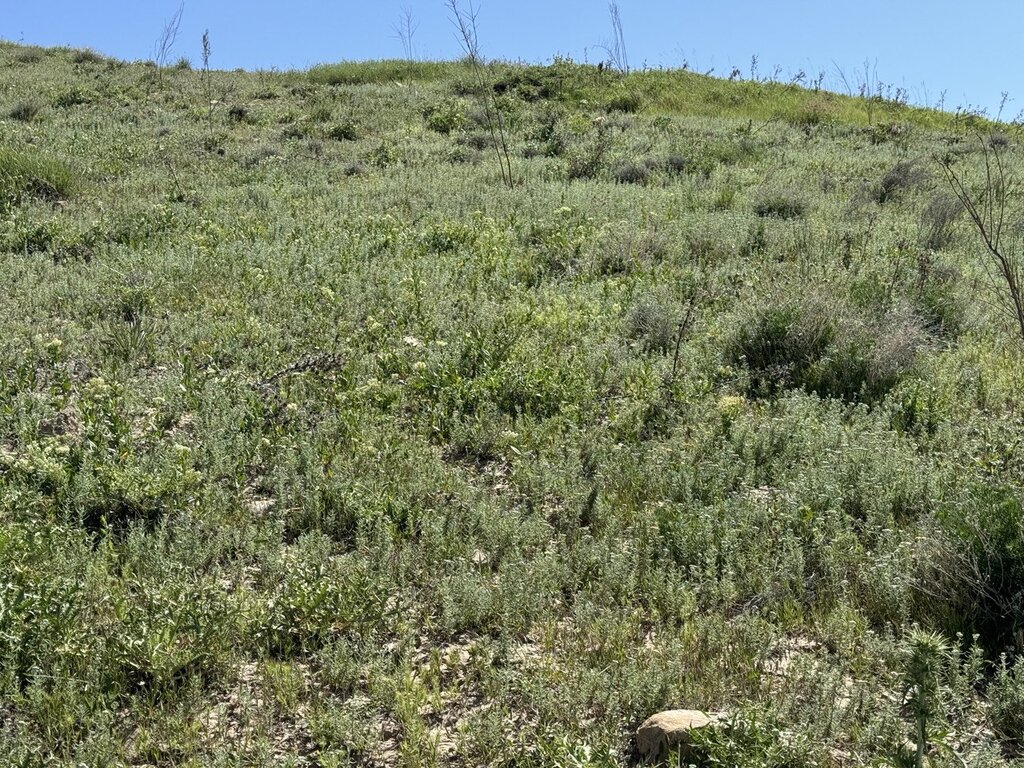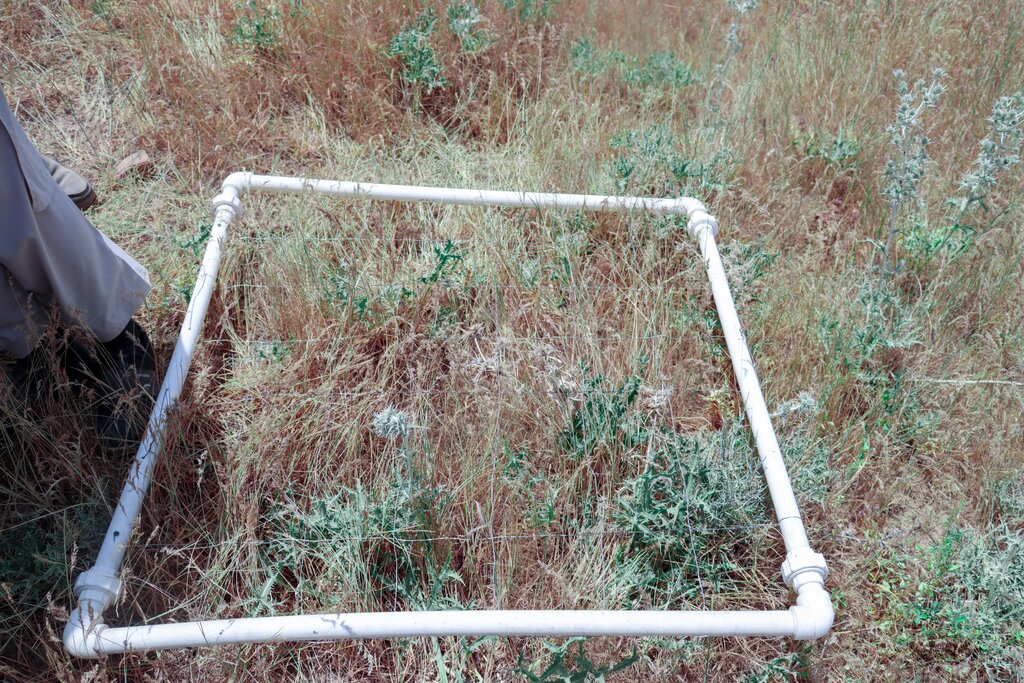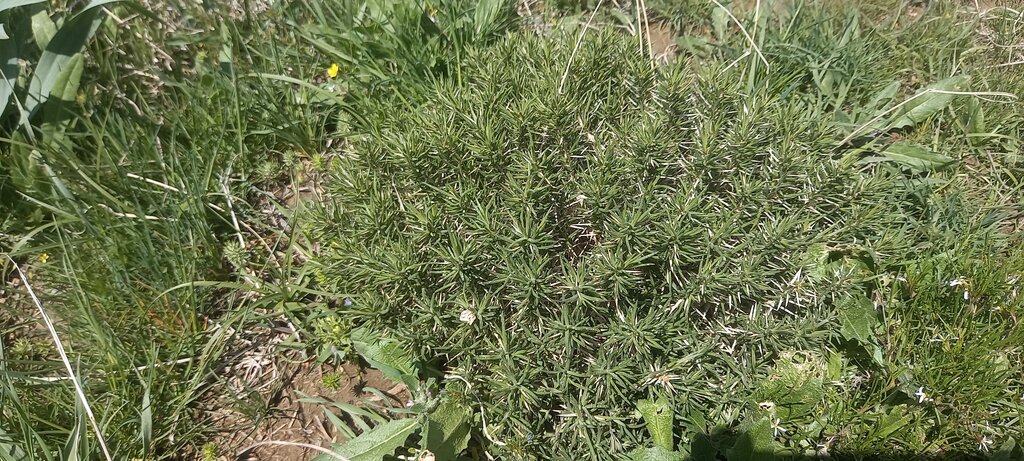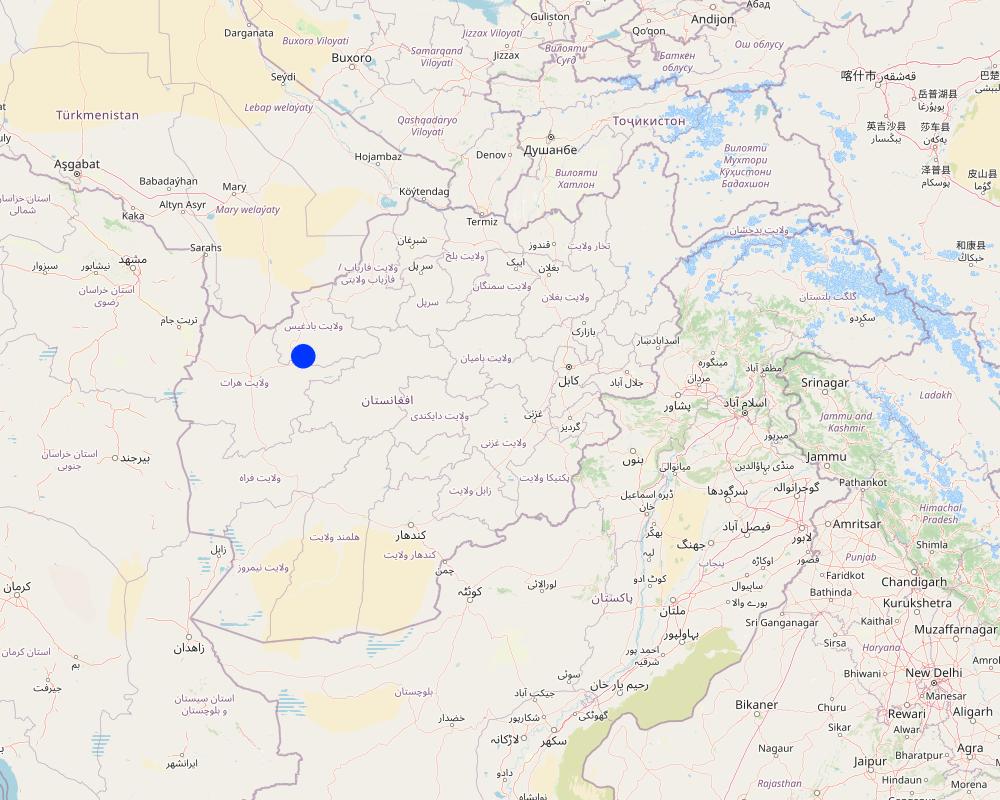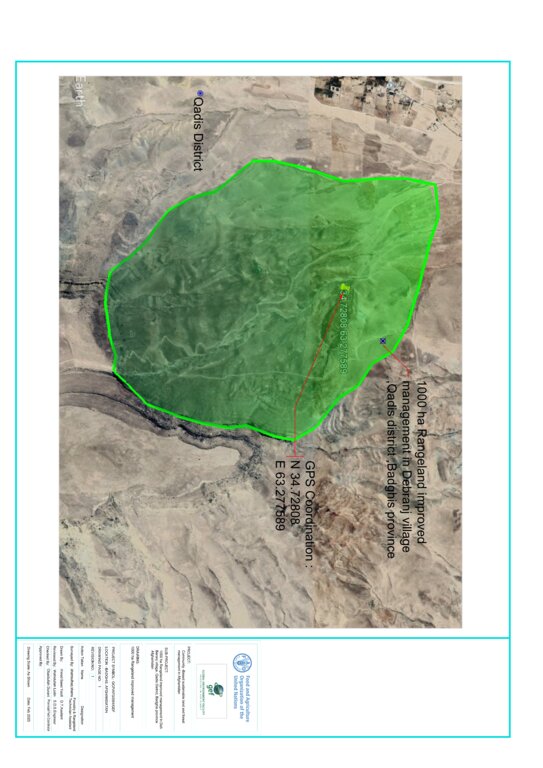Implementing Site Quarantine to reduce rangeland degradation in the highlands of Badghis [อัฟกานิสถาน]
- ผู้สร้างสรรค์:
- การอัพเดท:
- ผู้รวบรวม: Shamsulhaq Shams
- ผู้เรียบเรียง: Mir Wali Khan Lakanwal, Mohammad Mustafa Sahebzada, Obaidullah Durani, Megha bajaj
- ผู้ตรวจสอบ: Rima Mekdaschi Studer, Illias Animon, Muhammad Ishaq Safi
قرنطینه و مدیریت چرا در ارتفاعات بادغیس برای کاهش تخریب مراتع
technologies_7459 - อัฟกานิสถาน
- บทสรุปทั้งหมดในรูปแบบของ PDF
- บทสรุปทั้งหมดในรูปแบบของ PDF เพื่อพิมพ์
- บทสรุปทั้งหมดในรูปหน้าเว็บ
- บทสรุปทั้งหมด (ไม่มีการจัดเรียง)
- Implementing Site Quarantine to reduce rangeland degradation in the highlands of Badghis: 13 มีนาคม 2025 (inactive)
- Implementing Site Quarantine to reduce rangeland degradation in the highlands of Badghis: 24 มีนาคม 2025 (inactive)
- Implementing Site Quarantine to reduce rangeland degradation in the highlands of Badghis: 6 พฤษภาคม 2025 (public)
ดูส่วนย่อย
ขยายทั้งหมด ย่อทั้งหมด1. ข้อมูลทั่วไป
1.2 รายละเอียดที่ติดต่อได้ของผู้รวบรวมและองค์กรที่เกี่ยวข้องในการประเมินและการจัดเตรียมทำเอกสารของเทคโนโลยี
วิทยากรหลัก
ผู้เชี่ยวชาญ SLM:
ผู้เชี่ยวชาญ SLM:
ผู้ใช้ที่ดิน:
Akrami Abdul Ghafar
Deh Beranj Rangeland Management Association
อัฟกานิสถาน
ผู้ใช้ที่ดิน:
Jami Mula Abdul Rhaman
Deh Beranj Rangeland Management Association
อัฟกานิสถาน
ผู้ใช้ที่ดิน:
Baqiri Habibullah
Deh Beranj Rangeland Management Association
อัฟกานิสถาน
ผู้ใช้ที่ดิน:
Sadat Serajulhaq
Deh Beranj RMA
อัฟกานิสถาน
ชื่อของโครงการซึ่งอำนวยความสะดวกในการทำเอกสารหรือการประเมินเทคโนโลยี (ถ้าเกี่ยวข้อง)
Community-based sustainable land and forest management in Afghanistanชื่อขององค์กรซึ่งอำนวยความสะดวกในการทำเอกสารหรือการประเมินเทคโนโลยี (ถ้าเกี่ยวข้อง)
FAO Afghanistan (FAO Afghanistan) - อัฟกานิสถาน1.3 เงื่อนไขการใช้ข้อมูลที่ได้บันทึกผ่านทาง WOCAT
ผู้รวบรวมและวิทยากรหลักยอมรับเงื่อนไขเกี่ยวกับการใช้ข้อมูลที่ถูกบันทึกผ่านทาง WOCAT:
ใช่
1.4 การเปิดเผยเรื่องความยั่งยืนของเทคโนโลยีที่ได้อธิบายไว้
เทคโนโลยีที่ได้อธิบายไว้นี้เป็นปัญหาของความเสื่อมโทรมโทรมของที่ดินหรือไม่ จึงไม่ได้รับการยอมรับว่าเป็นเทคโนโลยีเพื่อการจัดการที่ดินอย่างยั่งยืน:
ไม่ใช่
2. การอธิบายลักษณะของเทคโนโลยี SLM
2.1 การอธิบายแบบสั้น ๆ ของเทคโนโลยี
คำจำกัดความของเทคโนโลยี:
Restoring degraded rangelands through quarantine in Qadis district, Badghis Afghanistan.
2.2 การอธิบายแบบละเอียดของเทคโนโลยี
คำอธิบาย:
The project “Community-based sustainable land and forest management in Afghanistan”, implemented by FAO with the financial support of GEF, aimed to promote biodiversity conservation, climate change mitigation, and rangeland productivity through introducing community-based sustainable land and forest management (SLM/SFM) practices in rangeland and forest areas within five targeted provinces, including Badghis, that benefited rural communities that rely on these ecosystems for their livelihood.
In June 2022, a 1,000-hectare rangeland quarantine area was established to promote the rehabilitation of degraded land and restore the natural vegetation cover. This area was strategically enclosed with clearly marked benchmark boundaries to prevent grazing and ensure its complete protection. By protecting this area from human interference and grazing, the land has been given the opportunity to recover naturally.
The quarantine area has shown remarkable improvements in the health of its ecosystem. Native grasses, shrubs, and bushes have successfully rehabilitated, with noticeable growth and regeneration. The efforts to protect this area have allowed these plants to thrive without the pressure of overgrazing, leading to the revitalization of the local flora.
A significant outcome of the quarantine area is its role as a natural seed bank. Native seeds collected from this rehabilitated land are now being stored and used for reseeding other degraded rangelands. These seeds, adapted to the local environment, have high potential for successful regeneration when used to restore other areas facing similar ecological challenges. This process not only supports the rehabilitation of nearby rangelands but also contributes to the long-term sustainability and resilience of the local ecosystem.
The success of this quarantine area highlights the importance of protective measures and demonstrates the potential for land recovery through strategic interventions. As a result, this area serves as a model for rangeland rehabilitation. The lessons from the technology applied can be a valuable resource for future restoration efforts across the region.
2.3 รูปภาพของเทคโนโลยี
คำอธิบายภาพ:
Since this area is under rangeland quarantine, we have observed significant changes, such as the natural regeneration of grasses, shrubs, bushes, biodiversity and habitat.
2.4 วีดีโอของเทคโนโลยี
วันที่:
28/01/2025
สถานที่:
Deh Beranj village, Qadis district, Badghis Afghanistan
ชื่อผู้ถ่ายวีดีโอ:
Abdullah Kheradmand
2.5 ประเทศภูมิภาค หรือสถานที่ตั้งที่เทคโนโลยีได้นำไปใช้และได้รับการครอบคลุมโดยการประเมินนี้
ประเทศ:
อัฟกานิสถาน
ภูมิภาค/รัฐ/จังหวัด:
Badghis province
ข้อมูลจำเพาะเพิ่มเติมของสถานที่ตั้ง :
Deh Beranj Rangeland Management Association, Qadis district
ระบุการกระจายตัวของเทคโนโลยี:
- กระจายไปอย่างสม่ำเสมอในพื้นที่
If the Technology is evenly spread over an area, specify area covered (in km2):
10.0
Is/are the technology site(s) located in a permanently protected area?
ไม่ใช่
Map
×2.6 วันที่การดำเนินการ
ระบุปีที่ใช้:
2022
2.7 คำแนะนำของเทคโนโลยี
ให้ระบุว่าเทคโนโลยีถูกแนะนำเข้ามาอย่างไร:
- ทางโครงการหรือจากภายนอก
ความคิดเห็น (ประเภทของโครงการ เป็นต้น) :
GEF-06 SLM project in Afghanistan
3. การจัดประเภทของเทคโนโลยี SLM
3.1 วัตถุประสงค์หลักของเทคโนโลยี
- ปรับปรุงการผลิตให้ดีขึ้น
- ลด ป้องกัน ฟื้นฟู การเสื่อมโทรมของที่ดิน
- อนุรักษ์ระบบนิเวศน์
- รักษาสภาพหรือปรับปรุงความหลากหลายทางชีวภาพ
- ชะลอการเปลี่ยนแปลงภูมิอากาศของโลกและผลกระทบ
3.2 ประเภทของการใช้ที่ดินในปัจจุบันที่ได้นำเทคโนโลยีไปใช้
Land use mixed within the same land unit:
ไม่ใช่

ทุ่งหญ้าเลี้ยงสัตว์
Extensive grazing:
- กึ่งโนแมนดิซึ่มหรือแพสโตแรลลิซึ่ม (Semi-nomadism/pastoralism)
ทุ่งหญ้าเลี้ยงสัตว์ที่มีการจัดการแบบเข้มข้นหรือการผลิตอาหารสัตว์:
- ทุ่งหญ้าเลี้ยงสัตว์ที่ได้มีการปรับปรุง (Improved pastures)
Animal type:
- sheep
Is integrated crop-livestock management practiced?
ไม่ใช่
ผลิตภัณฑ์และบริการ:
- meat
- milk
Species:
sheep
Count:
50000
3.4 การใช้น้ำ
การใช้น้ำของที่ดินที่มีการใช้เทคโนโลยีอยู่:
- จากน้ำฝน
แสดงความคิดเห็น:
Rainfall occurs in December to April
3.5 กลุ่ม SLM ที่ตรงกับเทคโนโลยีนี้
- การปิดล้อมพื้นที่ (หยุดการใช้ประโยชน์ สนับสนุนการฟื้นฟู)
- การจัดการปศุสัตว์และทุ่งหญ้าเลี้ยงสัตว์
- การปรับปรุงดิน / พืชคลุมดิน
3.6 มาตรการ SLM ที่ประกอบกันเป็นเทคโนโลยี

มาตรการอนุรักษ์ด้วยวิธีพืช
- V1: ต้นไม้และพุ่มไม้คลุมดิน

มาตรการอนุรักษ์ด้วยการจัดการ
- M5: การควบคุมหรือการเปลี่ยนแปลงขององค์ประกอบของชนิดพันธุ์
- M6: การจัดการของเสีย (การทำ รีไซเคิล การเอากลับมาใช้ใหม่หรือการลดปริมาณ)
3.7 รูปแบบหลักของการเสื่อมโทรมของที่ดินที่ได้รับการแก้ไขโดยเทคโนโลยี

การกัดกร่อนของดินโดยน้ำ
- Wt (Loss of topsoil): การสูญเสียดินชั้นบนหรือการกัดกร่อนที่ผิวดิน

การเสื่อมโทรมของดินทางด้านกายภาพ
- Pw (Waterlogging): ภาวะชุ่มน้ำ

การเสื่อมโทรมของดินทางด้านชีวภาพ
- Bc (Reduction of vegetation cover): การลดลงของจำนวนพืชที่ปกคลุมดิน
- Bf (Detrimenta leffects of fires): ผลเสียหายจากไฟ
- Bs (Quality and species composition): องค์ประกอบหรือความหลากหลายทางคุณภาพและชนิดพันธุ์ลดลง
3.8 การป้องกัน การลดลง หรือการฟื้นฟูความเสื่อมโทรมของที่ดิน
ระบุเป้าหมายของเทคโนโลยีกับความเสื่อมโทรมของที่ดิน:
- ลดความเสื่อมโทรมของดิน
4. ข้อมูลจำเพาะด้านเทคนิค กิจกรรมการนำไปปฏิบัติใช้ ปัจจัยนำเข้า และค่าใช้จ่าย
4.1 แบบแปลนทางเทคนิคของเทคโนโลยี
ข้อมูลจำเพาะด้านเทคนิค (แบบแปลนทางเทคนิคของเทคโนโลยี):
• Green area indicates where grasses regenerated and the GPS shows exact quarantined area.
• Rangeland quarantine was implemented for three years to facilitate the recovery of grasses. By restricting access to degraded areas, we allowed native vegetation to regenerate without disturbance. The grazing exclusion is by social fencing.
• The boundary mark is not a fence but functions as one. Constructed from rocks (1 x 1.5 x 2 meters), the boundary marks are placed every 100 to 200 meters around the rangeland quarantine area to clearly mark its boundaries and prevent or control grazing, ensuring the area remains closed for its recovery.
• Stakeholder involvement through inclusion of local communities in planning and implementation processes.
ผู้เขียน:
Shamsulhaq Shams
วันที่:
10/12/2024
4.2 ข้อมูลทั่วไปเกี่ยวกับการคำนวณปัจจัยนำเข้าและค่าใช้จ่าย
ให้ระบุว่าค่าใช้จ่ายและปัจจัยนำเข้าได้รับการคำนวณอย่างไร:
- ต่อพื้นที่ที่ใช้เทคโนโลยี
ระบุขนาดและหน่วยพื้นที่:
1000 Ha
ระบุสกุลเงินที่ใช้คำนวณค่าใช้จ่าย:
- USD
ระบุค่าเฉลี่ยของค่าจ้างในการจ้างแรงงานต่อวัน:
5 USD
4.3 กิจกรรมเพื่อการจัดตั้ง
| กิจกรรม | Timing (season) | |
|---|---|---|
| 1. | Survey and site selection followed by feasibility study | 1st month 10/04/2022 |
| 2. | Preparing construction material (eg. assembling rocks) | 2nd month 08/05/2022 |
| 3. | Construction of boundary marks around the area | 3rd month 01/06/2022 |
| 4. | Capacity building of the target communities | 4th month 05/07/2022 |
| 5. | Hiring guard for patrolling the area | 5th month 01/08/2022 |
4.4 ค่าใช้จ่ายของปัจจัยนำเข้าที่จำเป็นสำหรับการจัดตั้ง
| ปัจจัยนำเข้า | หน่วย | ปริมาณ | ค่าใช้จ่ายต่อหน่วย | ค่าใช้จ่ายทั้งหมดต่อปัจจัยนำเข้า | %ของค่าใช้จ่ายที่ก่อให้เกิดขึ้นโดยผู้ใช้ที่ดิน | |
|---|---|---|---|---|---|---|
| แรงงาน | Skilled labour for construction of boundary mark | person/day | 60.0 | 11.0 | 660.0 | 100.0 |
| แรงงาน | Unskilled labour for construction of boundary mark | person/day | 130.0 | 5.0 | 650.0 | 100.0 |
| แรงงาน | Guard for patrolling the area | person/day | 2.0 | 1015.0 | 2030.0 | 50.0 |
| วัสดุสำหรับก่อสร้าง | Rock | M3 | 100.0 | 1.41 | 141.0 | 100.0 |
| ค่าใช้จ่ายทั้งหมดของการจัดตั้งเทคโนโลยี | 3481.0 | |||||
| Total costs for establishment of the Technology in USD | 3481.0 | |||||
ถ้าผู้ใช้ที่ดินรับภาระน้อยกว่า 100% ของค่าใช้จ่าย ให้ระบุว่าใครเป็นผู้รับผิดชอบส่วนที่เหลือ:
50% of the costs of guards for patrolling the area was paid by the FAO-GEF project
แสดงความคิดเห็น:
Cost of skilled labour for construction of the boundary marks was paid by FAO-GEF project.
4.5 การบำรุงรักษาสภาพหรือกิจกรรมที่เกิดขึ้นเป็นประจำ
| กิจกรรม | ช่วงระยะเวลา/ความถี่ | |
|---|---|---|
| 1. | Patrolling the area | All seasons/regular |
4.6 ค่าใช้จ่ายของปัจจัยนำเข้าและกิจกรรมที่เกิดขึ้นเป็นประจำที่ต้องการการบำรุงรักษา (ต่อปี)
| ปัจจัยนำเข้า | หน่วย | ปริมาณ | ค่าใช้จ่ายต่อหน่วย | ค่าใช้จ่ายทั้งหมดต่อปัจจัยนำเข้า | %ของค่าใช้จ่ายที่ก่อให้เกิดขึ้นโดยผู้ใช้ที่ดิน | |
|---|---|---|---|---|---|---|
| แรงงาน | Guard for patrolling the area (second year) | person/year | 2.0 | 1015.0 | 2030.0 | 50.0 |
| ค่าใช้จ่ายทั้งหมดของการบำรุงรักษาสภาพเทคโนโลยี | 2030.0 | |||||
| Total costs for maintenance of the Technology in USD | 2030.0 | |||||
4.7 ปัจจัยสำคัญที่สุดที่มีผลกระทบต่อค่าใช้จ่าย
ปัจจัยสำคัญที่สุดที่มีผลกระทบต่อค่าใช้จ่ายต่างๆ:
Skilled and unskilled labour
5. สิ่งแวดล้อมทางธรรมชาติและของมนุษย์
5.1 ภูมิอากาศ
ฝนประจำปี
- < 250 ม.ม.
- 251-500 ม.ม.
- 501-750 ม.ม.
- 751-1,000 ม.ม.
- 1,001-1,500 ม.ม.
- 1,501-2,000 ม.ม.
- 2,001-3,000 ม.ม.
- 3,001-4,000 ม.ม.
- > 4,000 ม.ม.
ระบุปริมาณน้ำฝนเฉลี่ยรายปี (ถ้ารู้) :หน่วย ม.ม.
250.00
ข้อมูลจำเพาะ/ความคิดเห็นเรื่องปริมาณน้ำฝน:
Winter (January, February, March)
Dry periods start from May till November
เขตภูมิอากาศเกษตร
- กึ่งแห้งแล้ง
Annual temperature is 25 degrees
5.2 สภาพภูมิประเทศ
ค่าเฉลี่ยความลาดชัน:
- ราบเรียบ (0-2%)
- ลาดที่ไม่ชัน (3-5%)
- ปานกลาง (6-10%)
- เป็นลูกคลื่น (11-15%)
- เป็นเนิน (16-30%)
- ชัน (31-60%)
- ชันมาก (>60%)
ธรณีสัณฐาน:
- ที่ราบสูง/ที่ราบ
- สันเขา
- ไหล่เขา
- ไหล่เนินเขา
- ตีนเนิน
- หุบเขา
ระดับความสูง:
- 0-100 เมตร
- 101-500 เมตร
- 501-1,000 เมตร
- 1,001-1,500 เมตร
- 1,501-2,000 เมตร
- 2,001-2,500 เมตร
- 2,501-3,000 เมตร
- 3,001-4,000 เมตร
- > 4,000 เมตร
ให้ระบุถ้าเทคโนโลยีได้ถูกนำไปใช้:
- บริเวณแอ่งบนที่ราบ (concave situations)
ความคิดเห็นและข้อมูลจำเพาะเพิ่มเติมเรื่องสภาพภูมิประเทศ:
1800 m above sea level and slope angle is 20 %
5.3 ดิน
ค่าเฉลี่ยความลึกของดิน:
- ตื้นมาก (0-20 ซ.ม.)
- ตื้น (21-50 ซ.ม.)
- ลึกปานกลาง (51-80 ซ.ม.)
- ลึก (81-120 ซ.ม.)
- ลึกมาก (>120 ซ.ม.)
เนื้อดิน (ดินชั้นบน):
- ละเอียด/หนัก (ดินเหนียว)
เนื้อดินล่าง (> 20 ซ.ม.ต่ำจากผิวดิน):
- ละเอียด/หนัก (ดินเหนียว)
อินทรียวัตถุในดิน:
- ต่ำ (<1%)
5.4 ความเป็นประโยชน์และคุณภาพของน้ำ
ระดับน้ำใต้ดิน:
> 50 เมตร
น้ำไหลบ่าที่ผิวดิน:
ปานกลาง
คุณภาพน้ำ (ที่ยังไม่ได้บำบัด):
เป็นน้ำเพื่อการดื่มที่ดี
Water quality refers to:
both ground and surface water
ความเค็มของน้ำเป็นปัญหาหรือไม่:
ไม่ใช่
กำลังเกิดน้ำท่วมในพื้นที่หรือไม่:
ไม่ใช่
5.5 ความหลากหลายทางชีวภาพ
ความหลากหลายทางชนิดพันธุ์:
- สูง
ความหลากหลายของแหล่งที่อยู่:
- ปานกลาง
ความคิดเห็นและข้อมูลจำเพาะเพิ่มเติมของความหลากหลายทางชีวภาพ:
The rangelands are characterized by flora diversity and likely host a variety of plant species that are adapted to arid conditions. These include drought-resistant grasses like Eragrostis species, shrubs like Acantholimon caryophllaceum, Artemisia and some endemic plant species unique to the region (Achillea nabilis, Cardaria draba, Cousinia resinosa).
5.6 ลักษณะของผู้ใช้ที่ดินที่นำเทคโนโลยีไปปฏิบัติใช้
อยู่กับที่หรือเร่ร่อน:
- กึ่งเร่ร่อน
แนวทางการตลาดของระบบการผลิต:
- mixed (subsistence/ commercial)
รายได้ที่มาจากนอกฟาร์ม:
- < 10% ของรายได้ทั้งหมด
ระดับของความมั่งคั่งโดยเปรียบเทียบ:
- จน
เป็นรายบุคคล/ครัวเรือน:
- กลุ่ม/ชุมชน
ระดับของการใช้เครื่องจักรกล:
- งานที่ใช้แรงกาย
เพศ:
- ชาย
อายุของผู้ใช้ที่ดิน:
- วัยกลางคน
5.7 Average area of land used by land users applying the Technology
- < 0.5 เฮกตาร์
- 0.5-1 เฮกตาร์
- 1-2 เฮกตาร์
- 2-5 เฮกตาร์
- 5-15 เฮกตาร์
- 15-50 เฮกตาร์
- 50-100 เฮกตาร์
- 100-500 เฮกตาร์
- 500-1,000 เฮกตาร์
- 1,000-10,000 เฮกตาร์
- >10,000 เฮกตาร์
พิจารณาว่าเป็นขนาดเล็ก กลาง หรือขนาดใหญ่ (ซึ่งอ้างอิงถึงบริบทระดับท้องถิ่น):
- ขนาดเล็ก
5.8 กรรมสิทธิ์ในที่ดิน สิทธิในการใช้ที่ดินและสิทธิในการใช้น้ำ
กรรมสิทธิ์ในที่ดิน:
- เป็นแบบชุมชนหรือหมู่บ้าน
สิทธิในการใช้ที่ดิน:
- เกี่ยวกับชุมชน (ถูกจัดระเบียบ)
สิทธิในการใช้น้ำ:
- เกี่ยวกับชุมชน (ถูกจัดระเบียบ)
Are land use rights based on a traditional legal system?
ใช่
ระบุ:
Traditional land use rights
แสดงความคิดเห็น:
Land use rights are held collectively by communities, reflecting a communal approach to resource management.
5.9 การเข้าถึงบริการและโครงสร้างพื้นฐาน
สุขภาพ:
- จน
- ปานกลาง
- ดี
การศึกษา:
- จน
- ปานกลาง
- ดี
ความช่วยเหลือทางด้านเทคนิค:
- จน
- ปานกลาง
- ดี
การจ้างงาน (เช่น ภายนอกฟาร์ม):
- จน
- ปานกลาง
- ดี
ตลาด:
- จน
- ปานกลาง
- ดี
พลังงาน:
- จน
- ปานกลาง
- ดี
ถนนและการขนส่ง:
- จน
- ปานกลาง
- ดี
น้ำดื่มและการสุขาภิบาล:
- จน
- ปานกลาง
- ดี
บริการด้านการเงิน:
- จน
- ปานกลาง
- ดี
6. ผลกระทบและสรุปคำบอกกล่าว
6.1 ผลกระทบในพื้นที่ดำเนินการ (On-site) จากการใช้เทคโนโลยี
ผลกระทบทางด้านเศรษฐกิจและสังคม
การผลิต
การผลิตพืชที่ใช้เลี้ยงปศุสัตว์
จำนวนก่อน SLM:
500 kg fodder/ hectare
หลังจาก SLM:
900 kg fodder/hectare
แสดงความคิดเห็น/ระบุ:
Preventing overgrazing helps maintain plant cover and allows for recovery periods, leading to increased biomass production.
การผลิตสัตว์
จำนวนก่อน SLM:
0.5 liter per sheep/day
หลังจาก SLM:
1 liter per sheep/day
แสดงความคิดเห็น/ระบุ:
Enhancing the quality and availability of forage provid sheep with a more nutritious diet, which directly impacts milk production.
ความเป็นประโยชน์และคุณภาพของน้ำ
คุณภาพน้ำดื่ม
จำนวนก่อน SLM:
Contaminated water with minerals
หลังจาก SLM:
Leading to clearer and cleaner water
แสดงความคิดเห็น/ระบุ:
Effective rangeland management practices enhance the overall health of the ecosystem, leading to improved drinking water quality through better infiltration due to better soil cover and less water runoff.
ผลกระทบด้านสังคมวัฒนธรรมอื่น ๆ
ความมั่นคงด้านอาหาร / พึ่งตนเองได้
แสดงความคิดเห็น/ระบุ:
Sustainable rangeland management supports local economies by providing livelihoods through livestock production, which can improve food access and self-sufficiency in communities.
สถานการณ์ด้านสุขภาพ
จำนวนก่อน SLM:
Less nutritious animal products
หลังจาก SLM:
More nutritious animal products
แสดงความคิดเห็น/ระบุ:
Enhanced forage quality leads to healthier livestock, which provides better quality meat and dairy products, contributing to improved nutrition for communities.
SLM หรือความรู้เรื่องความเสื่อมโทรมของที่ดิน
จำนวนก่อน SLM:
Little capacity building
หลังจาก SLM:
Capacity building for 500 members of the Rangeland Management Association
แสดงความคิดเห็น/ระบุ:
Training programs for farmers and land managers, increasing their knowledge about sustainable practices and land conservation techniques.
ผลกระทบด้านนิเวศวิทยา
วัฐจักรน้ำหรือน้ำบ่า
น้ำไหลบ่าที่ผิวดิน
แสดงความคิดเห็น/ระบุ:
Rangeland improvement practices can significantly reduce surface runoff, enhance soil health, and improve water quality
การระบายน้ำส่วนเกิน
แสดงความคิดเห็น/ระบุ:
More efficient excess water drainage, enhancing soil structure, reducing waterlogging, and promoting overall ecological health.
ดิน
สิ่งปกคลุมดิน
จำนวนก่อน SLM:
20% soil cover
หลังจาก SLM:
80-90% soil cover
แสดงความคิดเห็น/ระบุ:
Enhanced soil cover leads to healthier ecosystems, improved soil conditions, and increased biodiversity.
ความหลากหลายทางชีวภาพของพืชและสัตว์
การปกคลุมด้วยพืช
จำนวนก่อน SLM:
20%
หลังจาก SLM:
80-90%
แสดงความคิดเห็น/ระบุ:
Enhanced vegetation cover leads to healthier ecosystems, improved soil conditions, and increased biodiversity
มวลชีวภาพ/เหนือดินชั้น C
จำนวนก่อน SLM:
20-30% biomass
หลังจาก SLM:
80-90% biomass
แสดงความคิดเห็น/ระบุ:
Rangeland improvement practices significantly boost biomass and above-ground carbon levels, enhancing ecosystem productivity and contributing to carbon sequestration efforts.
ความหลากหลายทางชีวภาพของพืช
จำนวนก่อน SLM:
60/plants per square meter
หลังจาก SLM:
200/plants per square meter
แสดงความคิดเห็น/ระบุ:
Enhanced plant diversity leads to healthier ecosystems, increased resilience, and improved overall productivity.
ชนิดพันธุ์ที่ให้ประโยชน์
จำนวนก่อน SLM:
Limited Beneficial Species
หลังจาก SLM:
Increased Beneficial Species
แสดงความคิดเห็น/ระบุ:
Rangeland improvement practices significantly boost the presence and impact of beneficial species, enhancing soil health, ecosystem stability, and overall productivity.
ลดความเสี่ยงของภัยพิบัติ
ผลกระทบจากภัยแล้ง
จำนวนก่อน SLM:
500 kg fodder/ha
หลังจาก SLM:
800 kg fodder/ ha
แสดงความคิดเห็น/ระบุ:
Rangeland improvement practices significantly mitigate the impacts of drought, enhancing soil moisture retention, vegetation resilience by enhancing the land's ability to retain moisture and support vegetation growth, and overall ecosystem stability.
การปล่อยคาร์บอนและก๊าซเรือนกระจก
จำนวนก่อน SLM:
80000 m3/ winter season
หลังจาก SLM:
20000 m3/ winter season
แสดงความคิดเห็น/ระบุ:
Healthy, diverse plant communities capture and sequester more carbon dioxide through photosynthesis, contributing to greater carbon sequestration and contributing to climate change mitigation efforts.
Specify assessment of on-site impacts (measurements):
N/A
6.2 ผลกระทบนอกพื้นที่ดำเนินการ (Off-site) จากการใช้เทคโนโลยี
น้ำท่วมพื้นที่ท้ายน้ำ
จำนวนก่อน SLM:
10-12 times /year
หลังจาก SLM:
Zero floods per year
แสดงความคิดเห็น/ระบุ:
Risk and impact of downstream flooding is significantly reduced by enhancing vegetation cover, improving soil health, and promoting better water management.
ตะกอนที่ถูกพัดพามาโดยลม
จำนวนก่อน SLM:
more sediment transport
หลังจาก SLM:
Zero sediment transport
แสดงความคิดเห็น/ระบุ:
With vegetation cover, there is significantly less sediment being transported by wind
ผลกระทบของก๊าซเรือนกระจก
จำนวนก่อน SLM:
20 tons CO2 removed/year
หลังจาก SLM:
50 tons CO2 removed/year
แสดงความคิดเห็น/ระบุ:
Healthy rangelands help absorb more carbon in plants and soil, which lowers the amount of CO₂ in the atmosphere. When these lands are grazed properly, they allow perennial and annual grasses to regrow. This regrowth not only captures more carbon but also improves soil health.
Specify assessment of off-site impacts (measurements):
N/A
6.3 การเผชิญและความตอบสนองของเทคโนโลยีต่อการเปลี่ยนแปลงสภาพภูมิอากาศที่ค่อยเป็นค่อยไป และสภาพรุนแรงของภูมิอากาศ / ภัยพิบัติ (ที่รับรู้ได้โดยผู้ใช้ที่ดิน)
การเปลี่ยนแปลงสภาพภูมิอากาศที่ค่อยเป็นค่อยไป
การเปลี่ยนแปลงสภาพภูมิอากาศที่ค่อยเป็นค่อยไป
| ฤดู | increase or decrease | เทคโนโลยีมีวิธีการรับมืออย่างไร | |
|---|---|---|---|
| อุณหภูมิประจำปี | ลดลง | ปานกลาง | |
| ฝนประจำปี | เพิ่มขึ้น | ปานกลาง |
สภาพรุนแรงของภูมิอากาศ (ภัยพิบัติ)
ภัยพิบัติทางอุตุนิยมวิทยา
| เทคโนโลยีมีวิธีการรับมืออย่างไร | |
|---|---|
| พายุลมประจำท้องถิ่น | ปานกลาง |
ภัยพิบัติจากสภาพภูมิอากาศ
| เทคโนโลยีมีวิธีการรับมืออย่างไร | |
|---|---|
| คลื่นความร้อน | ปานกลาง |
| ภัยจากฝนแล้ง | ปานกลาง |
ภัยพิบัติจากน้ำ
| เทคโนโลยีมีวิธีการรับมืออย่างไร | |
|---|---|
| น้ำท่วมฉับพลัน | ปานกลาง |
6.4 การวิเคราะห์ค่าใช้จ่ายและผลประโยชน์ที่ได้รับ
ผลประโยชน์ที่ได้รับเปรียบเทียบกับค่าใช้จ่ายในการจัดตั้งเป็นอย่างไร (จากมุมมองของผู้ใช้ที่ดิน)
ผลตอบแทนระยะสั้น:
ด้านบวกเล็กน้อย
ผลตอบแทนระยะยาว:
ด้านบวกอย่างมาก
ผลประโยชน์ที่ได้รับเปรียบเทียบกับค่าใช้จ่ายในการบำรุงรักษาหรือต้นทุนที่เกิดขึ้นซ้ำอีก เป็นอย่างไร (จากมุมมองของผู้ใช้ที่ดิน)
ผลตอบแทนระยะสั้น:
ด้านบวก
ผลตอบแทนระยะยาว:
ด้านบวกอย่างมาก
แสดงความคิดเห็น:
Improved rangelands often lead to higher forage yields, supporting larger and healthier livestock populations. This can result in increased income for land users.
6.5 การปรับตัวของเทคโนโลยี
- ครั้งเดียวหรือเป็นการทดลอง
Of all those who have adopted the Technology, how many did so spontaneously, i.e. without receiving any material incentives/ payments?
- 0-10%
6.6 การปรับตัว
เทคโนโลยีได้รับการปรับเปลี่ยนเมื่อเร็วๆนี้ เพื่อให้ปรับตัวเข้ากับสภาพที่กำลังเปลี่ยนแปลงหรือไม่:
ไม่ใช่
6.7 จุดแข็ง / ข้อได้เปรียบ / โอกาสของเทคโนโลยี
| จุดแข็ง / ข้อได้เปรียบ / โอกาสในทัศนคติของผู้ใช้ที่ดิน |
|---|
| Rangeland quarantine allow for better management of pasture resources leading to improved pasture and grass quality. |
| Rangeland quarantine increased productivity can maximize the land's carrying capacity leading to higher livestock productivity per unit area. |
| Rangeland quarantine helps prevent overgrazing, reduces parasite loads, minimizes soil compaction, and allows for more natural feeding behaviors, all of which contribute to overall animal health. |
| Reduce greenhouse gas emissions through carbon sequestration. |
| Properly managed rangeland quarantine can promote biodiversity by creating varied habitats and supporting a range of plant and animal species. |
| Implementing rangeland quarantine can lead to knowledge transfer among farmers, researchers, and agricultural extension services, fostering innovation and best practices in sustainable land management. |
6.8 จุดอ่อน / ข้อเสียเปรียบ / ความเสี่ยงของเทคโนโลยีและวิธีการแก้ไข
| จุดอ่อน / ข้อเสียเปรียบ / ความเสี่ยงในทัศนคติของผู้ใช้ที่ดิน | มีวิธีการแก้ไขได้อย่างไร |
|---|---|
| Ensuring the right number of animals on each grazing area can be challenging, leading to risks of overgrazing or underutilization. | Stocking rate management. |
| Rangeland quarantine can lead to social conflicts among different user groups, such as conflicting interests between livestock owners, conservationists, and indigenous communities. | Facilitating dialogue among stakeholders, promoting collaborative rangeland management approaches, respecting traditional land tenure systems, and fostering community-based conflict resolution mechanisms can help manage. |
| จุดอ่อน / ข้อเสียเปรียบ / ความเสี่ยงในทัศนคติของผู้รวบรวมหรือวิทยากรหลัก | มีวิธีการแก้ไขได้อย่างไร |
|---|---|
| When grazing animals are quarantined, their numbers may increase in certain areas, leading to overgrazing. This can result in habitat degradation and loss of plant diversity. | Implement managed grazing systems to control population densities and prevent overgrazing. This can include rotational grazing practices. |
7. การอ้างอิงและการเชื่อมต่อ
7.1 วิธีการและแหล่งข้อมูล
- ไปเยี่ยมชมภาคสนาม การสำรวจพื้นที่ภาคสนาม
5
- การสัมภาษณ์กับผู้ใช้ที่ดิน
12
- การสัมภาษณ์ผู้เชี่ยวชาญด้าน SLM หรือผู้ชำนาญ
2
- การเก็บรวบรวมมาจากรายงานและเอกสารที่มีอยู่
2
วันที่เก็บรวบรวมข้อมูล(ภาคสนาม) :
23/10/2024
7.4 General comments
This questionnaire serves as an ideal model to showcase the work modality and shared experiences with other regions. By evaluating this type of work model, individuals interested in this field can easily adjust their activities and increase their chances of success.
ลิงก์และโมดูล
ขยายทั้งหมด ย่อทั้งหมดลิงก์
ไม่มีลิงก์
โมดูล
ไม่มีโมดูล


